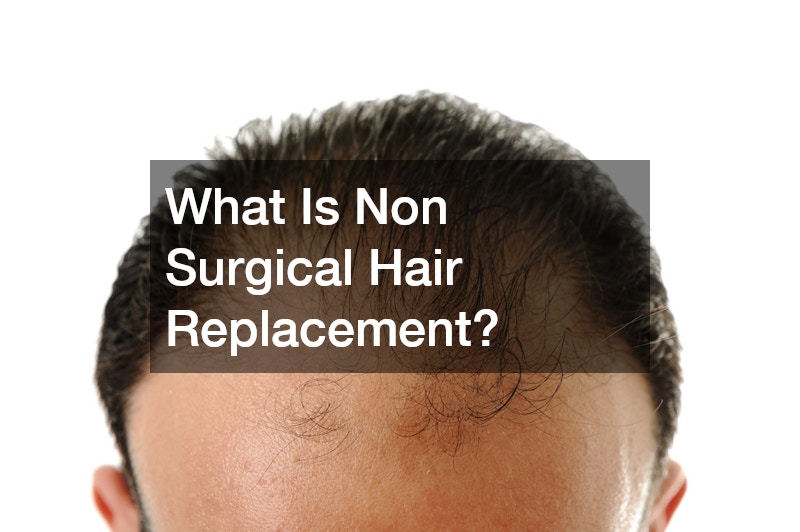Disclaimer: Life Cover Guide. This site provides family & home content for informational purposes only.
Non surgical hair replacement is an effective and increasingly popular solution for individuals experiencing hair loss who do not want to undergo invasive surgical procedures such as hair transplants. Unlike surgical options, non surgical hair replacement involves the use of hairpieces, wigs, or hair systems that are designed to blend seamlessly with the individual’s natural hair. This method offers a non-invasive, customizable, and affordable alternative for those seeking to restore their appearance and confidence. Here’s a closer look at what non surgical hair replacement entails, its benefits, and how it works.
1. What Is Non-Surgical Hair Replacement?
Non-surgical hair replacement involves using custom-made hair systems or wigs that are carefully crafted to mimic natural hair. These hair systems are typically made from either human hair or synthetic fibers and are attached to the scalp using medical-grade adhesives, clips, or other secure attachment methods.
The process starts with a consultation where a hair specialist evaluates the individual’s hair loss pattern, scalp condition, and hair color and texture. Based on this assessment, the specialist customizes a hairpiece that matches the individual’s natural hair, ensuring a seamless and undetectable result. The goal is to create a natural look that allows the person to engage in daily activities like showering, swimming, and exercising without concern.
2. How Does It Work?
Non-surgical hair replacement systems work by attaching a custom-made hairpiece to the individual’s scalp. The hair system can be applied using several different methods, including:
Bonding: Medical-grade adhesive is applied to the scalp, allowing the hairpiece to stay securely in place for several weeks or even months.
Clipping: Small clips are used to attach the hair system to the existing hair, offering a semi-permanent option that can be removed and reapplied as needed.
Taping: Hairpieces can also be attached using double-sided tape, which is less permanent but still secure for day-to-day activities.
These hair systems are designed to be lightweight, breathable, and comfortable, making them suitable for individuals with different levels of hair loss. Some hair systems may cover only a specific area of the scalp, such as the crown, while others are full wigs that cover the entire head.
3. Who Can Benefit From Non-Surgical Hair Replacement?
Non-surgical hair replacement is ideal for individuals who are experiencing various degrees of hair loss, from thinning hair to more advanced balding. It is especially popular among men and women with androgenetic alopecia (male or female pattern baldness), individuals with thinning hair due to stress or medical conditions, and those undergoing treatments like chemotherapy.
Unlike hair transplants, which require surgery and a recovery period, non-surgical hair replacement offers an immediate solution without downtime. This makes it an appealing option for people who want to restore their hair quickly without undergoing a medical procedure.
4. Benefits of Non-Surgical Hair Replacement
Non-Invasive: Since there is no surgery involved, individuals avoid the risks and complications that can arise from invasive procedures.
Immediate Results: Hair replacement systems provide instant results, unlike hair transplants, which can take months to show noticeable growth.
Customizable: Hair systems are designed to match the person’s hair color, texture, and density, ensuring a natural look that complements their features.
Reversible: Non-surgical hair replacement is not permanent, and individuals can change or adjust their hair systems as their preferences or hair loss patterns evolve.
Cost-Effective: Compared to hair transplant surgery, non-surgical hair replacement tends to be more affordable, making it accessible to a wider range of individuals.
5. Maintenance and Care
Proper maintenance is essential to prolong the lifespan of non-surgical hair systems. Depending on the method of attachment, individuals may need to return to their hair specialist for adjustments or reapplication every few weeks. Regular cleaning, conditioning, and care of the hairpiece also ensure it remains in good condition and looks natural.
.






